Contents
Guide
ANATOMY FOR STRENGTH AND
FITNESS TRAINING



This edition published in 2008 First published in 2006 by New Holland Publishers Ltd London Cape Town Sydney Auckland www.newhollandpublishers.com Garfield House, 8688 Edgware Road, London W2 2EA United Kingdom 80 McKenzie Street Cape Town 8001 South Africa Unit 1, 66 Gibbes Street Chatswood, NSW 2067 Australia 218 Lake Road Northcote, Auckland New Zealand Copyright 2006 New Holland Publishers (UK) Ltd Copyright 2006 in text: Mark Vella Copyright 2006 in illustrations: New Holland Publishers (UK) Ltd All rights reserved. No part of this publication may be reproduced, stored in a retrieval system or transmitted, in any form or by any means, electronic, mechanical, photocopying, recording or otherwise, without the prior written permission of the publishers and copyright holders. ISBN 978 1 60765 179 6 Publishing managers: Simon Pooley, Claudia dos Santos Commissioning editor: Alfred LeMaitre Editor: Gill Gordon Designer: Maryna Beukes Illustrators: James Berrang and Evan Oberholster Production: Myrna Collins Consultant: Dr Nick Walters Reproduction by Resolution Cape (Pty) Ltd Printed and bound in Singapore by Tien Wah Press (Pte) Ltd 10 9 8 7 6 5 4 3
CONTENTS
. . . . . . .
HOW TO USE THIS BOOK
Anatomy for Strength and Fitness Training is both a visual and textual analysis of common exercises, and a guide to how to do various exercises properly.
HOW TO USE THIS BOOK
Anatomy for Strength and Fitness Training is both a visual and textual analysis of common exercises, and a guide to how to do various exercises properly.
The book has two distinct parts: the first is a basic introduction to anatomical definitions and termi-no-logy. Essentially it helps to demystify the language used in part two, making it easier to follow the instructions in that section. Part two contains seven sections: the first four focus on exercises for the chest, legs and hips, back and shoulders, and arms. Sections five to seven concentrate on exercises to achieve different aims. Section five emphasizes development of the postural stabilizers, section six is devoted to static stretches, and section seven analyzes total body power exercises. Each section starts with a basic introduction that focuses on the body part or type of training covered.
Each exercise is independent, so you can choose the exercises you want to do, and in what sequence. Within each section, the individual exercises featured are defined and given some background. There is a how to guide for doing the exercise, as well as a visual and technical exercise analysis of which muscles are being used as mobilizers and postural stabilizers. The start and finish position is usually depicted, and training tips may be included. The adult human body has 600 muscles and 206 bones; this book looks at approximately 70 muscles involved in movement and stabilization. Many smaller muscles, including the deep, small muscles of the spine, and most muscles of the hands and feet are not given specific attention.
If they were, it might take several pages to analyse just one exercise and movement! Schematic diagram of how the exercise pages are structured
Exercise Name
Quick reference bar

Some background information and facts about the exercise.
Basic description How to peform this exercise.
Tips for good form Essential training guidelines.

| ANALYSIS OF MOVEMENT | JOINT 1 |
| Joints | Hip |
| Joint movement |
| Mobilizing muscles |
STARTING POSITION How to start and finish the exercise.
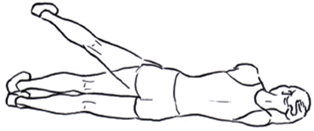 Disclaimer: Many of the exercises have a degree of risk of injury if done without adequate instruction and supervision. We recommend that you get a proper fitness assessment before undertaking any of the exercises, and that you seek qualified instruction if you are a total beginner.
Disclaimer: Many of the exercises have a degree of risk of injury if done without adequate instruction and supervision. We recommend that you get a proper fitness assessment before undertaking any of the exercises, and that you seek qualified instruction if you are a total beginner.
This book does not constitute medical advice and the author and publisher cannot be held liable for any loss, injury or inconvenience sustained by anyone using this book or the information contained in it.
ANATOMICAL DEFINITIONS AND TERMINOLOGY
Anatomy has its own language and, although technical, it is quite logical, originating mostly from Latin and Greek root words that make it easier to learn and understand the names of muscles, bones and other body parts. Whether you are a participant or a qualified exercise practitioner, using the correct terminology makes your work more technically correct and precise, and enables you to interact with other practitioners and work materials. Like most medical terms, anatomical terms are made up of small word parts, known as combining forms, that fit together to make the full term. These combining forms comprise roots, prefixes and suffixes. Knowing the different word parts allows you to unravel the word.
Most anatomical terms only contain two parts: either a prefix and root, or a root and suffix. For example, if you take the terms subscapular and suprascapular, the root is scapula, commonly known as the shoulder blades. Supra means above, hence suprascapular means something found above the shoulder blade, while sub meaning below indicates something found below the scapula. Common prefixes, suffixes and roots of anatomical terms
| Word roots | Meaning | Example | Definition |
| abdomin | pertaining to the abdomen | abdominal muscle | major muscle group of the abdominal region |
| acro | extremity | acromion | protruding feature on the scapula bone |
| articul | pertaining to the joint | articular surface | joint surface |
| brachi | arm, pertaining to the arm | brachialis | arm muscle |
| cerv | neck, pertaining to the neck | cervical vertebrae | found in the neck region of the spine |
| crani | skull | cranium | bones forming the skull |
| glute | buttock | gluteus maximus | buttock muscle |
| lig | to tie, to bind | ligament | joins bone to bone |
| pect, pector | breast, chest | pectoralis major | chest muscle |
| Word parts used as prefixes |
| ab- | away from, from, off | abduction | |

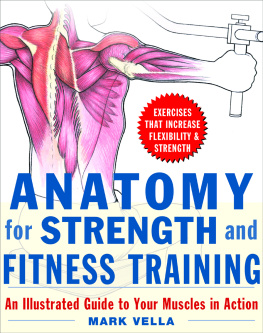
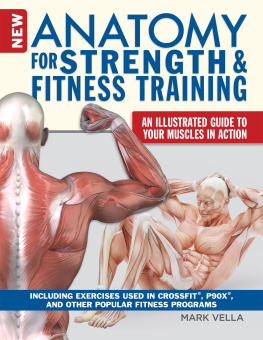
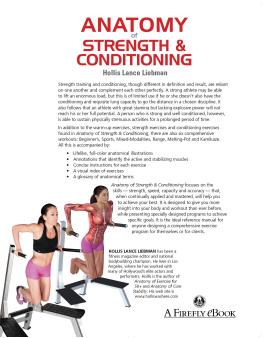
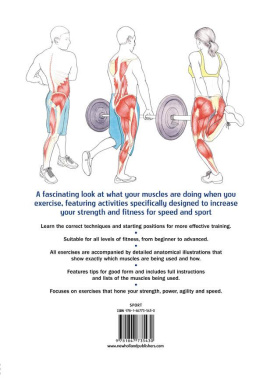

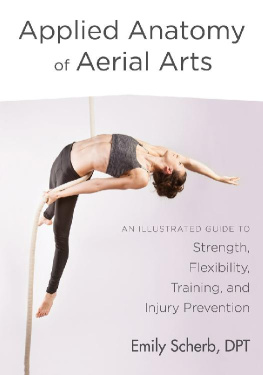
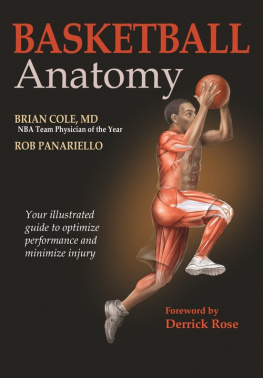
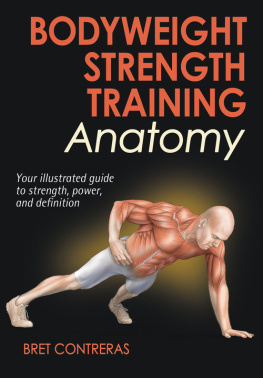
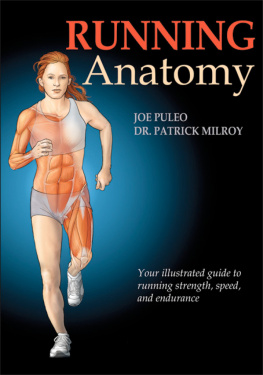



 This edition published in 2008 First published in 2006 by New Holland Publishers Ltd London Cape Town Sydney Auckland www.newhollandpublishers.com Garfield House, 8688 Edgware Road, London W2 2EA United Kingdom 80 McKenzie Street Cape Town 8001 South Africa Unit 1, 66 Gibbes Street Chatswood, NSW 2067 Australia 218 Lake Road Northcote, Auckland New Zealand Copyright 2006 New Holland Publishers (UK) Ltd Copyright 2006 in text: Mark Vella Copyright 2006 in illustrations: New Holland Publishers (UK) Ltd All rights reserved. No part of this publication may be reproduced, stored in a retrieval system or transmitted, in any form or by any means, electronic, mechanical, photocopying, recording or otherwise, without the prior written permission of the publishers and copyright holders. ISBN 978 1 60765 179 6 Publishing managers: Simon Pooley, Claudia dos Santos Commissioning editor: Alfred LeMaitre Editor: Gill Gordon Designer: Maryna Beukes Illustrators: James Berrang and Evan Oberholster Production: Myrna Collins Consultant: Dr Nick Walters Reproduction by Resolution Cape (Pty) Ltd Printed and bound in Singapore by Tien Wah Press (Pte) Ltd 10 9 8 7 6 5 4 3
This edition published in 2008 First published in 2006 by New Holland Publishers Ltd London Cape Town Sydney Auckland www.newhollandpublishers.com Garfield House, 8688 Edgware Road, London W2 2EA United Kingdom 80 McKenzie Street Cape Town 8001 South Africa Unit 1, 66 Gibbes Street Chatswood, NSW 2067 Australia 218 Lake Road Northcote, Auckland New Zealand Copyright 2006 New Holland Publishers (UK) Ltd Copyright 2006 in text: Mark Vella Copyright 2006 in illustrations: New Holland Publishers (UK) Ltd All rights reserved. No part of this publication may be reproduced, stored in a retrieval system or transmitted, in any form or by any means, electronic, mechanical, photocopying, recording or otherwise, without the prior written permission of the publishers and copyright holders. ISBN 978 1 60765 179 6 Publishing managers: Simon Pooley, Claudia dos Santos Commissioning editor: Alfred LeMaitre Editor: Gill Gordon Designer: Maryna Beukes Illustrators: James Berrang and Evan Oberholster Production: Myrna Collins Consultant: Dr Nick Walters Reproduction by Resolution Cape (Pty) Ltd Printed and bound in Singapore by Tien Wah Press (Pte) Ltd 10 9 8 7 6 5 4 3  Some background information and facts about the exercise. Basic description How to peform this exercise. Tips for good form Essential training guidelines.
Some background information and facts about the exercise. Basic description How to peform this exercise. Tips for good form Essential training guidelines. 
 Disclaimer: Many of the exercises have a degree of risk of injury if done without adequate instruction and supervision. We recommend that you get a proper fitness assessment before undertaking any of the exercises, and that you seek qualified instruction if you are a total beginner.
Disclaimer: Many of the exercises have a degree of risk of injury if done without adequate instruction and supervision. We recommend that you get a proper fitness assessment before undertaking any of the exercises, and that you seek qualified instruction if you are a total beginner.